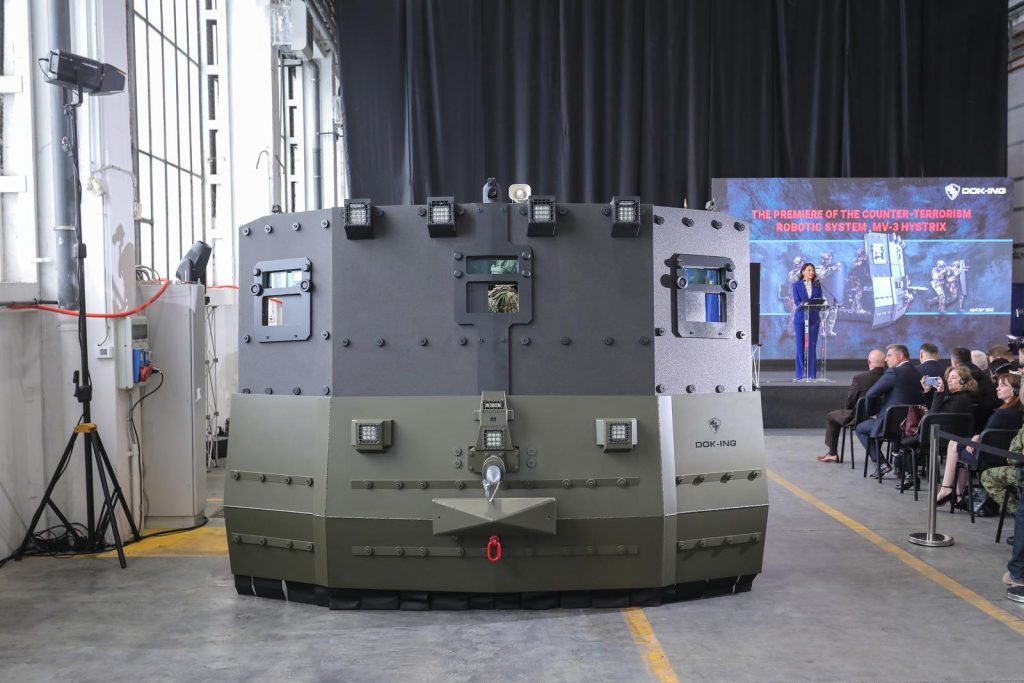August the 17th, 2023 – The Croatian DOK-ING company has been playing a vital role in life-saving operations in Ukraine as the country continues its battle against Russian aggression.
As Poslovni Dnevnik/Jerko Zlatar writes, as one of the most innovative domestic companies, for which Croatia is becoming more and more famous on a global scale, DOK-ING is playing a major part in saving human lives in Ukraine. Gordan Pesic and Konstantin Darmaniyan of the Croatian DOK-ING company sat down with Poslovni for an interview, where Ukraine and the company’s future development directions were discussed.
According to conservative estimates, there are about 10 million mines in Ukraine, and with the deliveries of cluster bombs to Ukraine and the already well-established practice of using them by the Russian Federation, how long will it take to demine Ukraine?
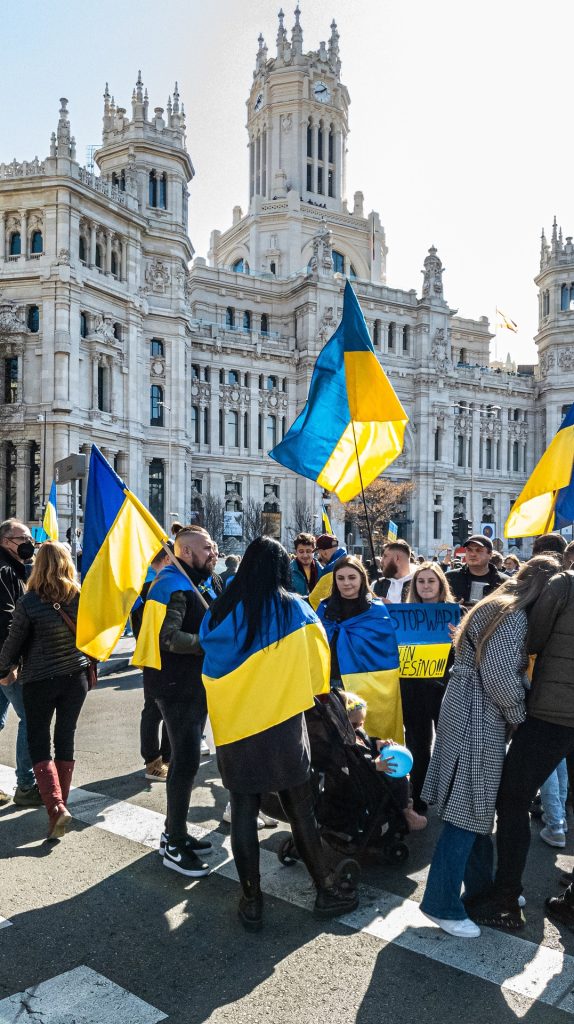
Konstantin Darmaniyan: It’s rather difficult to estimate exactly how long that would take at this moment in time. A large area of Ukraine has been bombed, an we’re not just talking about mines and cluster munitions, but about a large number of unexploded bombs, rockets, artillery projectiles… Humanitarian demining isn’t going to be carried out, but “clearing the battlefield” as it’s known, will be. That implies a different methodology and another pace of demining. Demining machines won’t be used, but other equipment will be. We do know all that, but the actual pace of the demining process is very difficult to estimate. I think that according to the roughest estimates, with all the international support, it will take Ukraine 15-20 years to clean everything up. In 1998, Croatia started using an organised mine action system and it still hasn’t been fully cleared of mines yet. We also have another problem on our hands – this is a highly mobile war, with the use of various highly mobile and well-armed mixed tactical groups, aviation, PZO systems and the like.
Is the Croatian DOK-ING company planning any acquisitions abroad? We saw that a Cooperation Agreement had been signed with the Ukrainian company A3Mash?
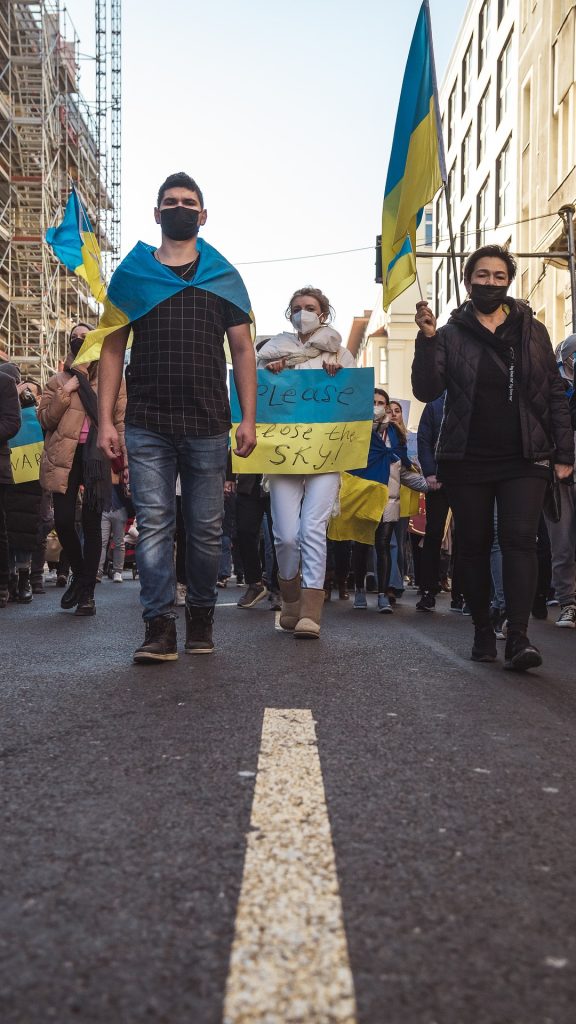
Gordan Pesic: DOK-ING is open to friendly partnerships, and what we did in Ukraine is an example of that. We follow their policies, both in terms of localisation of some critical components, and in terms of local maintenance and the support of already delivered machines. That’s how we’ve managed to form a partnership like this over in Ukraine, which enables the support of our programme there. By the end of 2023, DOK-ING will have delivered around 25 machines of various categories, and in order to ensure adequate after-sales support, we must be on site, in order to urgently intervene on end-user requests and to be able to adequately support the overall operation of our machines. Regarding acquisitions, I wouldn’t say that we have any ambitions to acquire companies, but that we’re planning to enter into strategic partnerships and collaborative projects with strong players on the global market, yes, that’s something that is interesting to us. This is what I mean when we talk about the European Defence Fund, then the European Defence Agency and all aspects of collaborative projects.
Was the Croatian government financing the machines for Ukraine? We have the example of South Korea, which financed the purchase of DOK-ING’s demining robots…
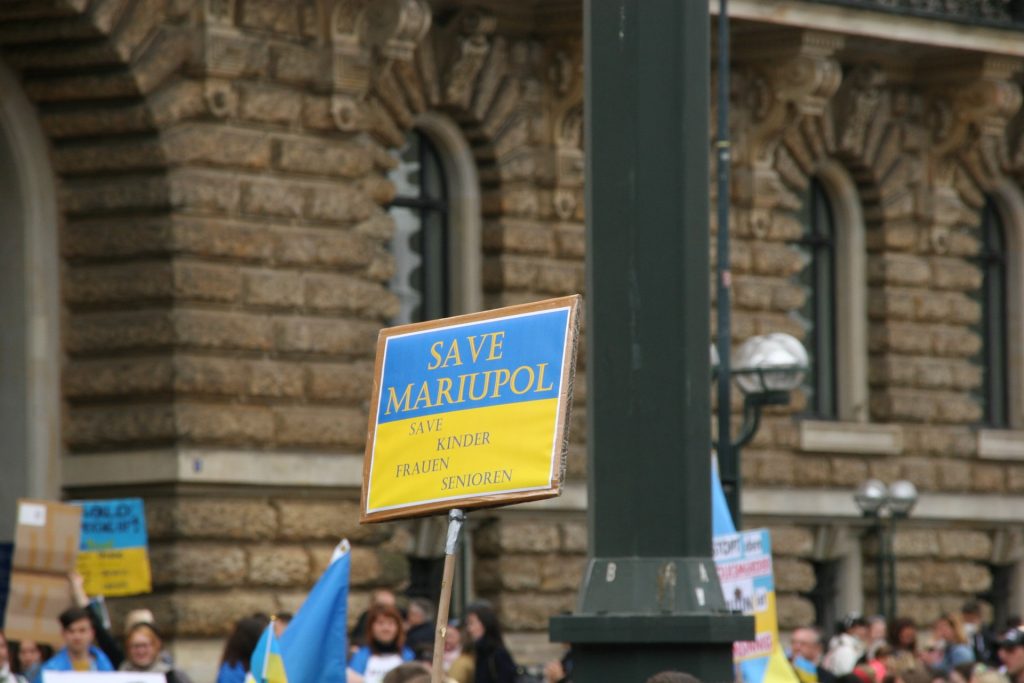
Konstantin Darmaniyan: There are several sources of funding. They’re mostly all external donors, Ukraine has no money. You have South Korea, Estonia, the European Commission, the Croatian Government, which finances the demining programme through the UNDP and in that sense has given money to UNDP Ukraine. There are also the Norwegian People’s Aid, the Swiss Foundation for Mine Action and other international NGOs. All the strongest players are there. Then there’s the FAO, the World Food Programme, because there are huge areas of fertile agricultural land (wheat, barley, all imaginable grains) in Ukraine. The local population was denied the opportunity to engage in agriculture, and many peasants were sadly killed. The tractor driver who ran into an anti-tank mine a week ago is fighting for his life in the hospital in Kramatorsk, he was pulled out of the flames, but he’s very seriously wounded. Every mine removed from those areas ends up saving someone’s life, someone’s tractor, someone’s harvester…
DOK-ING’s means for demining have proven themselves well in the Kherson region and in other newly liberated areas of Ukraine. We’ve seen the example of a mural dedicated to the MV-4, for example. What were your experiences there, considering that it was a testing ground?
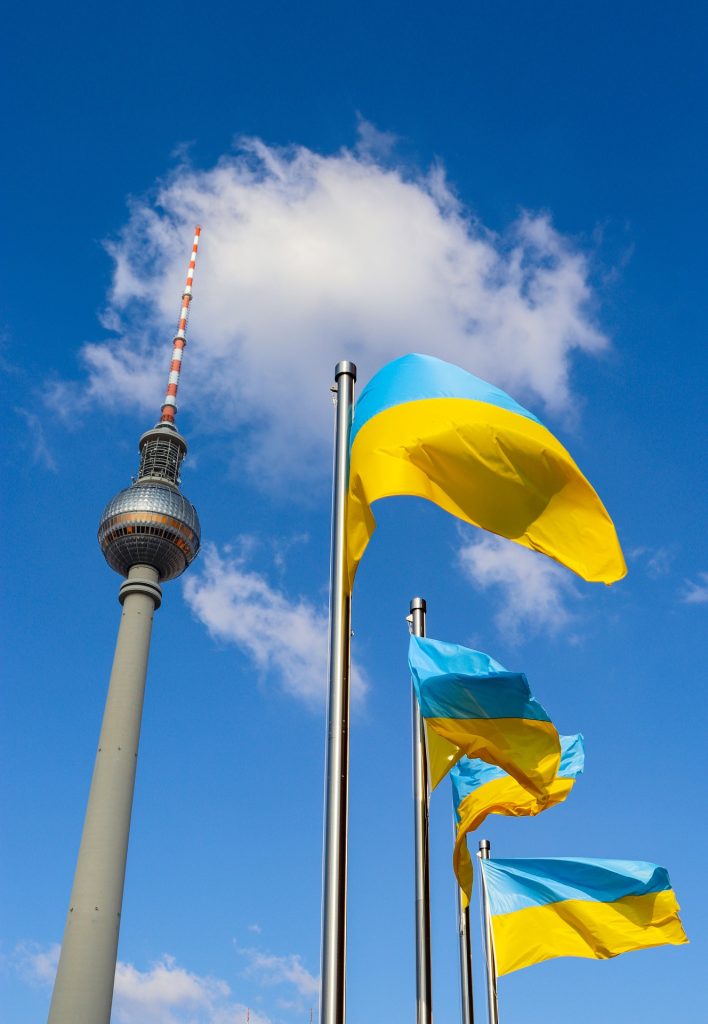
Konstantin Darmaniyan: Our machines are put to work in many locations, those locations change often and it depends on the current priorities. The first priority is to restore electricity to Ukrainian villages that haven’t had it for a year or more. In addition to that, next comes the water supply, and in this context we refer to it as extraordinary demining. This was also done right here in Croatia after 1995. Because of reconstruction and development, above all. Second of all, work is being done on the demining of houses and gardens, which means small farms that will be used by the local population. Several villages are of special importance, the President of Ukraine has personally made them a priority and they’re currently being demined. That said, positions often have to be changed due to priorities or because of a small volume of work. On top of that, our machines are intended for human demining, they don’t have the speed of tanks or combat vehicles and this takes more time. It’s been the case for several months that the targets of Russian mines have become unarmed civilian deminers. The Russians are trying to kill those people and this is being systematically carried out. Recently, an entire team was tragically killed in Kherson. They weren’t using our machines, they were working manually, but the Russians filmed them with a drone, and then they shot at them with artillery and mortars.
Gordan Pesic: Currently, Ukraine’s top priority is its critical infrastructure, water, electricity, then agricultural land, and then come de-occupied settlements. The extent of all of that is now impossible to estimate. In this sense, demining machines are perhaps the best way to carry out the technical reconnaissance and determine the required extent of what needs to be done, while at the same time dealing with the mined area.
Konstantin Darmaniyan: Before the start of the war in Ukraine, it was known that in the east of Ukraine, where the conflict had been frozen, about 60-70% of the total 7,000 km² contaminated area was mined, and that 30% referred to unexploded ordnance, while around 10% were surprise mines. God only knows what that situation is like now. It was estimated that the contaminated surface spanned about 174,000 square metres. Back in 1995, 13,100 square metres were in question here in Croatia. Back then, using systematic methodology, the Croatian Centre for Demining first carried out targeted non-technical reconnaissance at the state level, then technical reconnaissance with the aim of reducing the terrain, and then they started with the actual demining. That meant that the overall area was gradually reduced to a little over 1000 kilometres. There are still some 170-180 square kilometres in Croatia left where this needs to be done.
Is cooperation with other stakeholders in the Croatian industry planned? For example, with Geolux for radars, IRB or Adriatic aerospace. Several companies offer solutions for remote terrain imaging, as well as radar imaging for underground exploration…

Gordan Pesic: In addition to some of the traditional players, there are other bodies in Croatia who can help in demining processes. We’ve got the demining machines, as well as the manufacturers of personal protective equipment (body armor, helmets…) and several companies that deal with drones. With all that having been said, you need to know what their application is. All of the technologies based on drones remain in some kind of test phase and so far have proven to be inadequate and ineffective because mine countermeasure systems are only effective when it comes to plains and similar “smooth” types of land. There’s often a lot of vegetation, so drone-based technologies have their limitations.
Konstantin Darmaniyan: It all depends on the local government bodies that want or don’t want to accept that sort of technology. Tests of various drones were conducted free of charge in 5 or 6 Western European companies, using different methodologies for detecting mines and unexploded ordnance at a special training ground. They didn’t really get much hype. To detect such things, a drone must fly exclusively at low altitudes, as low as possible. A drone with a depth magnetometer must fly about 75 cm above the surface of the Earth, and the vegetation must be thoroughly mowed or not even be there in order to detect a mine as well as possible.
In Ukraine, we’ve got urban areas, urbanised villages completely destroyed by explosions along with large amounts of metal and concrete. Such systems cannot do anything there, nor can they perform well in areas under forest canopies. These systems are also weak in hilly and mountainous areas under vegetation. There are probably some technologies that we aren’t yet aware of, but they’re still in their experimental stages of development. A lot of robots are being developed at the minute, but they’re at such a level that they need to be operated by PhD holders. We have a machine for which two weeks of training is enough, and after that they can use it constantly.
Gordan Pesic: At the moment, the most widespread technologies are those used in human demining. So we have a man, we have a dog and we have a machine. Manually, the detector goes first, then the dog follows. Or the machine that speeds up the whole process, destroys vegetation, sifts the soil and destroys mines at the same time goes first. After that, there’s a follow-up procedure when the terrain is combed again with the help of a detector or a dog. This is according to the international standards.
Konstantin Darmaniyan: There are currently no standards for the use of drones in mine action, but they’re being worked on. Recently, at a symposium, a reputable company with excellent means of mine detection presented a drone with a magnetometer. They flew a meter above the football field, where mines and explosives were placed, and they demonstrated it at the training ground in Benkovac. You need to have a legislative framework in order to carry out such activities. Ukraine, unfortunately, currently has nothing. It has a Mine Action Act that still needs to be adjusted to international standards, they lack a lot of by-laws, and that’s where Croatia comes in with its knowledge and experience, and that’s where it can help the Ukrainians out a lot.
Gordan Pesic: Croatia is the only European country with recent experience in mine action that has a complete system for it. We’re talking about the legislative, organisational, technological and industrial framework. We have the necessary knowledge that could be transferred to Ukraine and adapted to their needs. This is an area where Croatia can really position itself in the proper way, reach out to various Ukrainian institutions, and then help them bilaterally in demining actions. This is all currently going well, the EU and NATO both recognise Croatia as a flagship country with rich experience in that area.
The Menschen gegen Minen initiative has achieved a lot in Namibia, where they made a lot of machines for mowing grass. Can these funds be used on robots produced by DOK-ING? WindhoekerMachinenfabrik that produced it is now in troubled waters. Could a similar company be acquired that would expand DOK-ING’s offer?
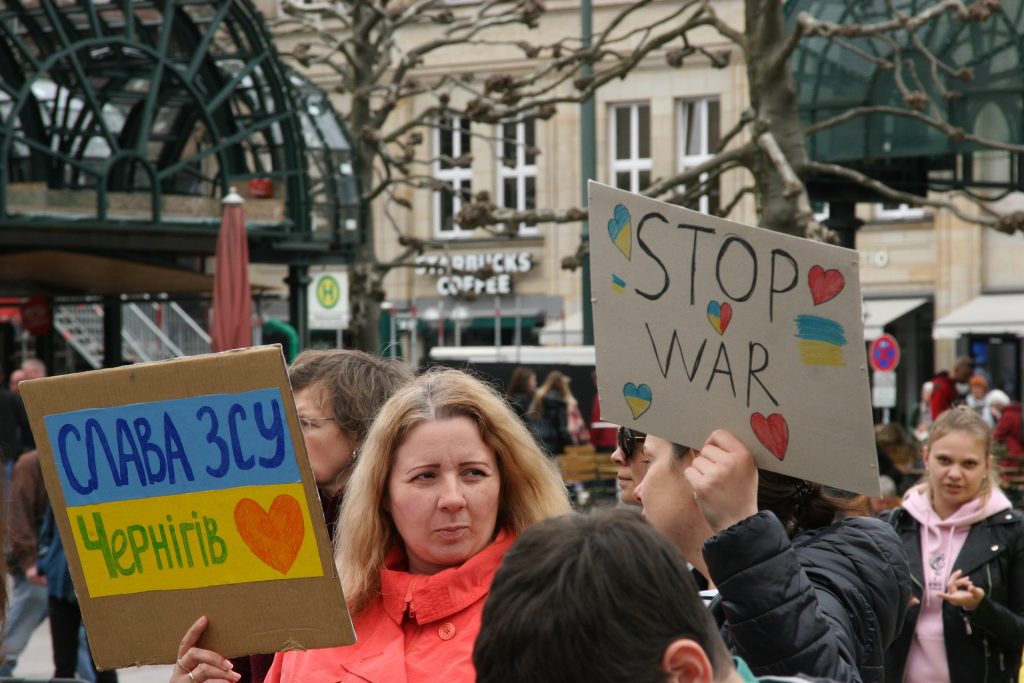
Konstantin Darmaniyan: Ukraine is a very interesting market for us also because of the huge amount of unemployed, highly educated engineering personnel. Second of all, after the collapse of the USSR, Ukraine had the largest military-technological potential after the Russian Federation. Thirdly, there is a need for local technical support, because by the end of the year, we plan to have delivered 25 machines, and we have the ambition to deliver 100 more in 2024 and 2025.
All this needs to be maintained. Although Croatia isn’t geographically far away, due to the absence of air traffic, it currently takes two days to reach Kyiv. Another reason is that it’s necessary to make ourselves available to the end user, especially regarding repairs and the supply of spare parts. Every machine comes with a stock of parts, but what if the stock runs out? In that case, the parts have to be ordered again, but the question is who will pay for all of that? And then the whole procurement process starts again.
When you have ready parts in stock at a local partner factory, then it’s something else entirely. The need for larger machines such as the MV-10, which are resistant to larger explosions, is becoming increasingly apparent, because both the Ukrainian and Russian sides are increasingly using “sandwich” mines, i.e. two anti-tank mines stacked on top of each other, which is 15 kilograms of explosives. Therefore, if there’s major and serious damage that cannot be repaired under these conditions, the machine is withdrawn either to the logistics base or to a partner factory where all of the necessary repairs can be performed. Our competition isn’t able to do this, but we’ll have a replacement machine immediately available for use. And that’s a very attractive offer to the Ukrainians.
We’re the strongest in the world in that segment of demining, we’re geographically close to Ukraine, and that was the idea of our Ukrainian partner. This kind of support is especially important for some small end users, who have one or two machines. We aren’t talking about government services that will have dozens of machines. If that happens, and it will happen, the commercialisation of the market is almost inevitable, as was the case right here in Croatia. More and more Ukrainian agricultural business entities will be forced to establish their own demining companies, hire people, get certificates and think about which machines to buy. This speeds up the process and makes it cheaper and safer.
Gordan Pesic: It’s extremely important that Croatia has an internationally accredited centre for the certification of demining machines, which is an indispensable capacity of this country so that those who work with improvised equipment and put additional armour on, for example, tractors, don’t die. They’re also trained to test and certify the equipment first. It’s also very important to determine the firm boundary between something that is safe and has a useful value and something that’s been improvised and is actually dangerous to use.
Konstantin Darmaniyan: When some kind of system is established and legal frameworks appear, improvised systems shouldn’t be used. The question is the verification of the machine, how reliable it is and what remains behind it? Does it have a constant digging depth? Who controls that depth? There are many factors involved in all of this. Some machines are made to operate remotely, but most still have a human driver in the cabin.
Can the Croatian DOK-ING company’s robot be equipped with technologies such as ground penetrating radars? That sort of thing can be seen on South Africa’s Husky
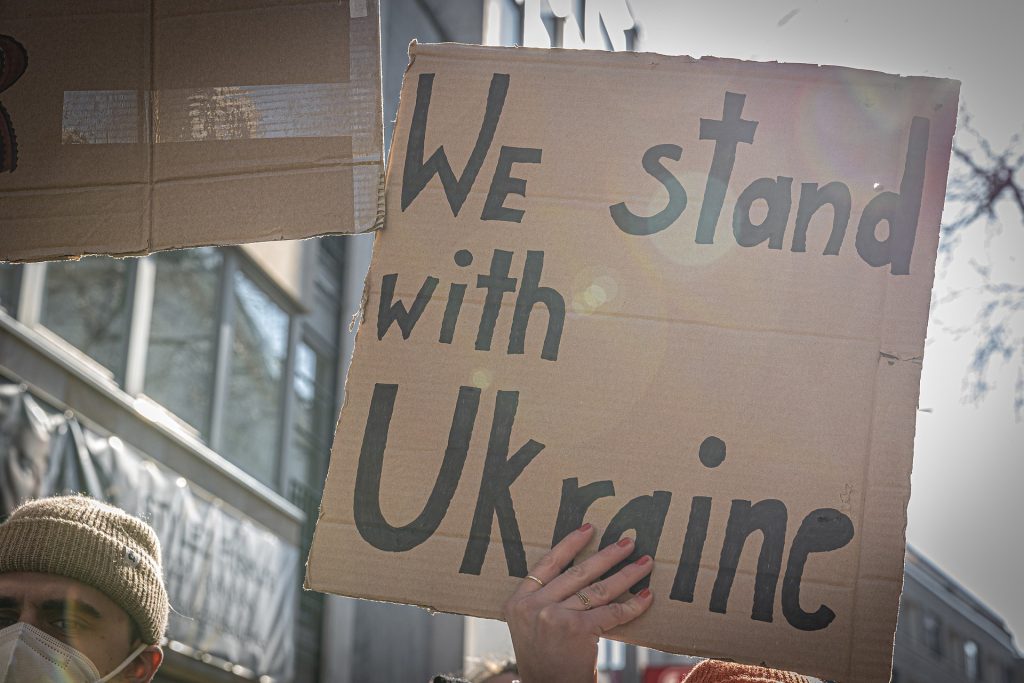
Konstantin Darmaniyan: We’re very familiar with that manufacturer (DCD). The South Africans mainly do the chassis. That vehicle has been excellently designed. It’s very resistant and robust, but a lot of the other equipment that is integrated into that machine is produced in the USA and is done by our partner, where former military engineers work. It’s good technology, but it’s primarily used to check roads and paths. Is this the technology Ukraine needs now? Not really. In addition, that vehicle requires a very high level of professional readiness and additional training. I’m not saying our machine is primitive, but it’s user-friendly enough that you can train a man to operate one tool in three weeks. More tools mean more weeks of training.
At Husky, the training lasts several months and three operators have to sit in the cabin. One reads the radar screen, the second is the server of the remote controlled combat station, the third controls it. They worked a lot when it was necessary to deliver food or medicine to local populations, for example in Mali, during peacekeeping operations. Two Husky-aids come with their radars in the front, in order to have a greater width of detection, and the third one has a robotic arm. That’s because in the case of the detection of a mine, they can dig it up and get it out.
Gordan Pesic: It should be added that one radar costs around 1.5 million euros, if I’m not mistaken. On top of that, it is used in combination with the human eye, so the extremely good training of the person monitoring the radar is required.
Konstantin Darmaniyan: To answer that question, the installation of radar isn’t applicable for Croatian DOK-ING robots, because they destroy everything that is on the surface, often on uneven ground and things which have been buried shallowly, up to 30 centimetres down. The depth is otherwise defined by international standards for human demining. Speaking in a global sense, we’re mostly looking at depths of 20 cm, and in Sudan, for example, due to the heavy soil, this depth is 13 cm. This is because of the so-called black soil, which is very hard and crumbles easily.

